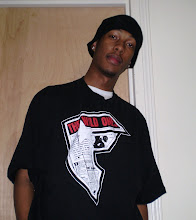 One of the biggest days in the sports covering year in my opinion is draft day and the week or two leading up to the draft. Al four of the major sports (NHL, NBA, NFL, and MLB) have drafts throughout the year to bring in new talent but the ones that get the best coverage is the NBA and the NFL. I don't think the reason is solely due to the popularity of the sports because MLB is still, in many people's eyes, America's game or at least second behind football.
One of the biggest days in the sports covering year in my opinion is draft day and the week or two leading up to the draft. Al four of the major sports (NHL, NBA, NFL, and MLB) have drafts throughout the year to bring in new talent but the ones that get the best coverage is the NBA and the NFL. I don't think the reason is solely due to the popularity of the sports because MLB is still, in many people's eyes, America's game or at least second behind football.I think that it has to do with the popularity of the draft itself. The NFL's and the NBA's drafts are both highly covered by major sports media outlets such as ESPN.com all the way down to smaller websites such as RealGM.com or a NBA draft site called NBADraft.net that gives year round coverage of the NBA draft every year.
Even the leagues sites (NBA.com has their own section up right now) itself provide in-depth coverage from real-time analysis of each pick that takes place exactly when the pick happens, to live blogs, to having their own columns and news stories when the stories break out.
I feel that when the draft comes around it is really equal to the coverage that is provided on television. The questions comes into play whether or not you want up to the minuet news that is provided online or the entertaining element that is provided when watching the event on television. Sports sites such as ESPN.com can provide both and it leaves you wondering sometimes whats the point of watching the draft on television.
Its amazing to me how popular the NFL and NBA drafts are because if someone asked me or many other people I know who was draft first in the MLB or NHL draft I wouldn't be able to tell you. But I can tell you that Jake Long was selected first in the NFL draft by the Miami Dolphins and that tonight, Derrick Rose has a great chance of being picked by the Chicago Bulls in the NBA draft.
The popularity of the NFL and NBA drafts have grown so much over the years that now we have shows and television specials on the lottery (the NBA performs a lotter for the 14 teams with losing records to determine the order in which they pick) or the NFL draft order. The popularity of these drafts also leads to more press time for the players that will participate in the draft and helps the teams sell more jerseys and hats.
They even have interactive games fans can play that allows them to predict the order in which players get selected in hopes to win prizes. With all of the news and events going on it makes the draft seem like a national sports holiday. And to think, when in the days of Magic Johnson and Larry Bird in the NBA or Johnny Unitas in the NFL the draft was longer with less coverage and not many people knew about it.
Now its as popular as the NBA Championship or the NFL Superbowl.
